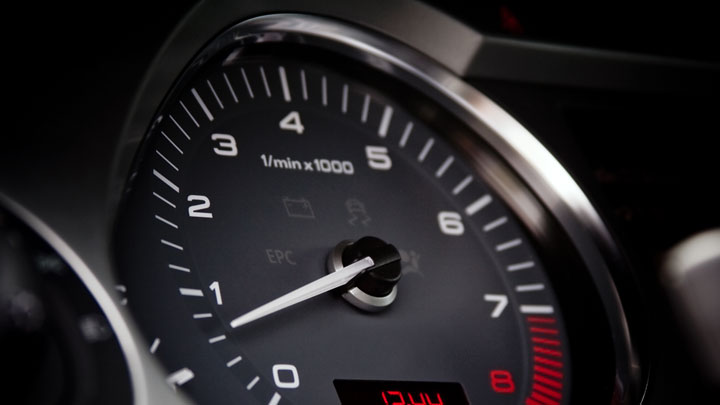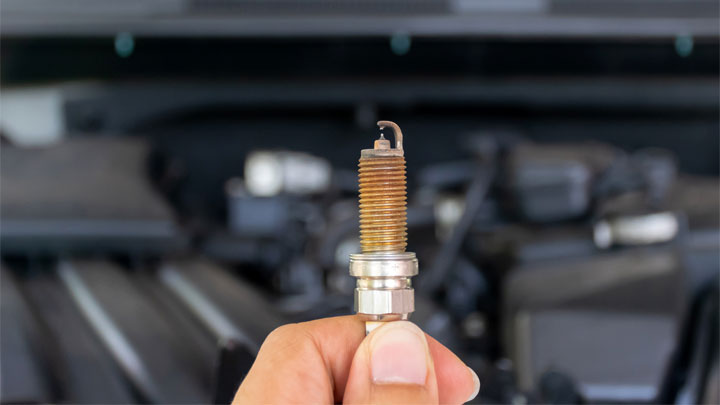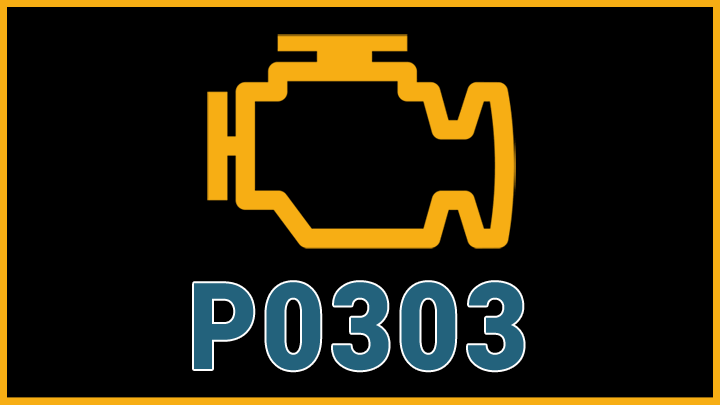Last Updated on November 30, 2022
Today’s vehicles operate in a highly complex nature, relying largely upon a web of interconnected electronic systems to facilitate proper operation. Simply put, the modern vehicle is every bit as computer and data driven, as it is mechanical in nature.
Luckily, such technological advancement also proves beneficial to consumers who are faced with an inoperable or ill-tempered vehicle. Today’s automobiles are capable of storing one or more fault codes when a malfunction occurs. These fault codes can prove valuable when attempting to diagnose the issue at hand, thereby minimizing vehicle downtime.
Of these various fault codes, some are more prevalent than others. One such DTC that is all too familiar to many motorists is fault P0303. This code serves as a cylinder-specific misfire code and can be used to describe a number of potential issues.
Read on to learn more about diagnostic trouble code P0303, as well as how to accurately diagnose and remedy the most common causes of DTC P0303.
What Does Code P0303 Mean?
Diagnostic trouble code P0303 simply indicates that multiple misfire events have been logged on cylinder #3 of a vehicle’s engine. A misfire is defined as a general lack of adequate combustion on one or more cylinders. Therefore, DTC P0303 would indicate a repetitive lack of combustion on cylinder #3.
Misfires are detected by an engine’s ECM/PCM and are logged to create freeze frame data of the event in question. Such misfires are identified by an engine’s ECM/PCM, through the analysis of data presented by the crankshaft position sensor. A relative loss in crank speed during a particular cylinder’s power stroke would signify a misfire.
When an event of this type is logged on multiple occasions, a P030(X) code is logged, with (X) denoting the number of the cylinder on which the misfire has been detected. A check engine light is then displayed across the affected vehicle’s instrument cluster, thereby notifying its driver.
Related: P0300, P0301, P0302, P0304, P0305, P0306
Symptoms of Code P0303

There are a number of symptoms that often accompany the presence of a P0303 diagnostic trouble code. Though these symptoms often vary on a case by case basis, several such symptoms tend to be far more prevalent than others.
The following are several of the most common symptoms associated with DTC P0303.
- Rough idle
- Hesitant acceleration
- Stalling at idle
- Hard start
- Lack of power
- Poor fuel economy
- “Rich” smelling exhaust
Causes of Code P0303

There are several potential causes of DTC P0303, the majority of which relate to a lack of spark or fuel on the cylinder in question. The following are several of the most common of these issues.
- Bad spark plugs
- Faulty or damaged spark plug wires
- Cylinder-specific fuel injector issues
- Faulty coil or coil pack
- Intake/vacuum leaks
- Mechanical wear
- Distributor cap/rotor damage or wear
Is Code P0303 Serious?
In general, DTC P0303 is considered to be quite severe in nature. The reason for this generalization tends to be two-fold. Not only is DTC P0303 typically accompanied by a host of driveability-related issues, but an unaddressed misfire can also cause a number of secondary issues with time.
When fuel is not combusted as intended, such as in the event of a cylinder misfire, unburnt fuel is routed downstream, through a vehicle’s exhaust. This fuel is then superheated, at which point damage to various components, including the catalytic converter, becomes likely.
In any event, a P0303 misfire code should be addressed as soon as possible, in a bid to minimize additional risk. If you do not feel confident diagnosing such an issue yourself, take your vehicle to a trusted service center at your first available convenience.
How to Fix Code P0303

The following steps can be followed when attempting to diagnose and remedy the root cause of a P0303 diagnostic trouble code. If in doubt, always consult factory-specific service literature for your vehicle.
#1 – Check For Presence Of Additional Codes
Prior to diving headlong into your diagnostic efforts, it is important to verify that no other diagnostic trouble codes are active. In the event that additional codes are active, each should be thoroughly diagnosed in its own right.
#2 – Check Freeze-Frame Data
One can now analyze the freeze-frame data pertaining to the fault at hand. Check to see at what RPM range misfires tend to occur, as such data could prove helpful during the diagnostic process.
#3 – Carefully Inspect Ignition System Components
You will now visually inspect your engine’s ignition system components. This includes checking for worn or damaged rotor button/distributor cap contacts (where applicable).
All spark plug wires should also be checked for chafing or other signs of damage. All spark plugs should also be carefully inspected.
#4 – Verify Spark on Affected Cylinder
If no damage is found, a spark tester should be used to check for active spark delivery on the affected cylinder. If such a test is conducted in absence of any observable irregularities, then the ignition circuit in question is unlikely to be at fault.
#5 – Check For Proper Fuel System Operation
With the use of a pressure gauge, check to ensure that your engine’s fuel pressure meets or exceeds manufacturer specifications. A bi-directional scan tool can also be used to verify the functionality of all injectors.
When cycled, the selected fuel injector should fire, causing a slight momentary dip in observed fuel pressure.
#6 – Perform Mechanical Tests
If no fuel or ignition system faults are found, a thorough mechanical inspection will be in store. This will include a compression test, as well as a cylinder leak down test, in order to verify the presence of sufficient compression.
If low compression is noted on the affected cylinder, tear down and overhaul might prove necessary.
#7 – Consult Service Literature
If tear down is deemed necessary, it becomes imperative to access pertinent service literature for your specific engine. This literature will provide you with accurate torque values, and other helpful notes on disassembly/assembly.



